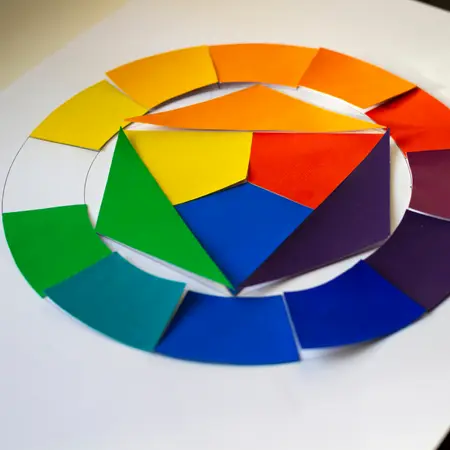
Color Psychology: Are You Using the Right Colors for Your Branding and Advertising?
How Color Affects Human Behavior and Emotions
Color is a powerful tool that can be used to influence our emotions, perceptions, and behavior. Color theory plays a crucial role in branding and advertising. It can help to create a strong visual identity that resonates with customers. It also communicates a brand’s values and personality.
Color theory plays a crucial role in branding and advertising as it helps to create a strong visual identity that resonates with customers and communicates a brand’s values and personality. However, not all colors are created equal. Choosing the right ones for your branding and advertising can make all the difference in creating a successful campaign.

Why Color Psychology Matters
Color psychology is the study of how color affects human behavior and emotions. It’s a complex field that takes into account cultural differences, personal preferences, and individual experiences. However, there are some general principles that apply across different cultures and contexts.
Red, for example, is often associated with passion, excitement, and urgency. It can also be used to create a sense of danger or warning. Blue, on the other hand, is often associated with calmness, trustworthiness, and professionalism.
Green is associated with nature, growth, and health, while yellow is associated with optimism, happiness, and energy. Black is often associated with sophistication and elegance, while white is associated with purity and simplicity.
These associations are not fixed, and different shades and contexts can alter their meanings. However, understanding these basic principles can help you to choose the right colors for your branding and advertising.
The Importance of Brand Color
Color theory plays a crucial role in branding and advertising. It helps to create a strong visual identity that resonates with customers. It also communicates a brand’s values and personality. A strong visual identity can make your brand more memorable, which can help to increase customer loyalty and trust.
The color red is often used in the popular branding of fast-food chains such as McDonald’s and KFC. This is because it creates a sense of urgency and excitement, which is suitable for these types of businesses. The color red is often used in the popular branding of fast-food chains such as McDonald’s and KFC. This is because it creates a sense of urgency and excitement, which is suitable for these types of businesses.
Choosing the right colors can also help you to differentiate yourself from your competitors. If all of your competitors are using the same colors, choosing a different color can help you to stand out. This will create a unique identity.
The color pink is often associated with femininity. Therefore, it is common to see it used in the branding of products targeted at women. However, if you’re a company that wants to target women, you don’t have to use pink. You could choose a different accent color that’s still feminine, such as purple or pastel colors.
Marketing Color Psychology and Your Advertising Campaigns
Choosing the right colors for your advertising is crucial. It can help you create a strong emotional connection with your target audience. Using colors that are known to evoke certain emotions and associations can create an ad that resonates with your audience. This will motivate them to take action.
If you’re creating an ad for a product, you may want to use colors associated with calmness. Examples of these colors include blue and green. If you’re creating an ad for a product, it’s meant to energize people. You might want to use colors that are associated with energy and excitement. Examples of these colors are red and yellow.
Using the wrong colors in your advertising can have the opposite effect and can create negative associations with your brand. If you’re creating an ad for a luxury product, it is important to use colors that are associated with luxury. Neon colors, for example, can create a negative impression and turn off potential customers.

How to Choose the Right Colors
Choosing the right colors for your branding and advertising can seem daunting, but it’s not as complicated as it may seem. Here are some steps to follow:
- Know Your Brand’s Values and Personality: Before choosing colors for your branding and advertising, you need to have a clear understanding of your brand’s values and personality. What do you stand for, and what kind of personality do you want to convey? This will help you to choose colors that align with your brand’s identity.
- Consider Your Target Audience: You also need to consider your target audience. What colors are they drawn to, and what emotions and associations do those colors evoke for them? Understanding your audience’s color preferences can help you to choose colors that resonate with them.

- Look at Your Competitors: It’s also important to look at your competitors and see what colors they’re using. If all of your competitors are using the same colors, choosing a different color can help you to stand out and create a unique identity. However, you also want to make sure that your colors are still appropriate for your industry and target audience.
- Test Your Colors: Once you’ve narrowed down your color scheme, it’s a good idea to test them with your target audience to see which ones resonate the most. You can do this through surveys or focus groups.
- Be Consistent: Once you choose your brand colors, it’s essential to be consistent in using them across all of your branding and advertising. This will help to create a strong visual identity that’s easily recognizable and memorable.
Color psychology is a crucial factor to consider when it comes to branding and advertising. Choosing the right color combinations can help you to create a strong visual identity that communicates your brand’s values and personality, and can create a strong emotional connection with your target audience. By following these steps and being consistent in using your colors, you can create a successful branding and advertising campaign that resonates with your audience and helps to build brand loyalty and trust.
Why is Color Psychology Important to Digital Marketing?

Color psychology is important to digital marketing because it can influence a person’s behavior and emotions towards a brand, product or service. The right color choices can help to create a strong visual identity, build brand recognition and loyalty, and create an emotional connection with the target audience, leading to increased engagement and conversions. Understanding color psychology can give digital marketers an edge in creating effective and impactful campaigns.
Ready to Grow Your Search Engine Results?
Let Digital Results assist you in your SEO strategy and help
deliver the search engine results you need.






